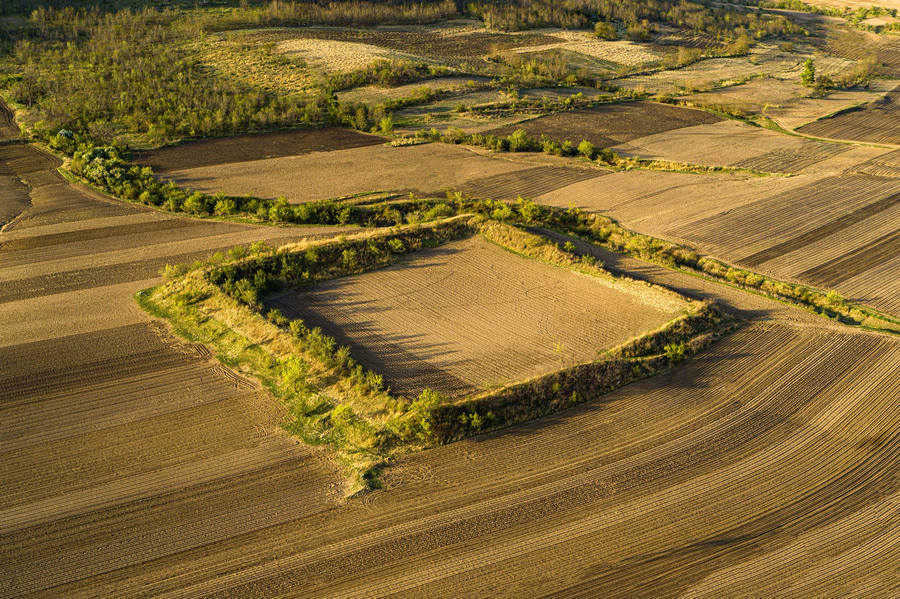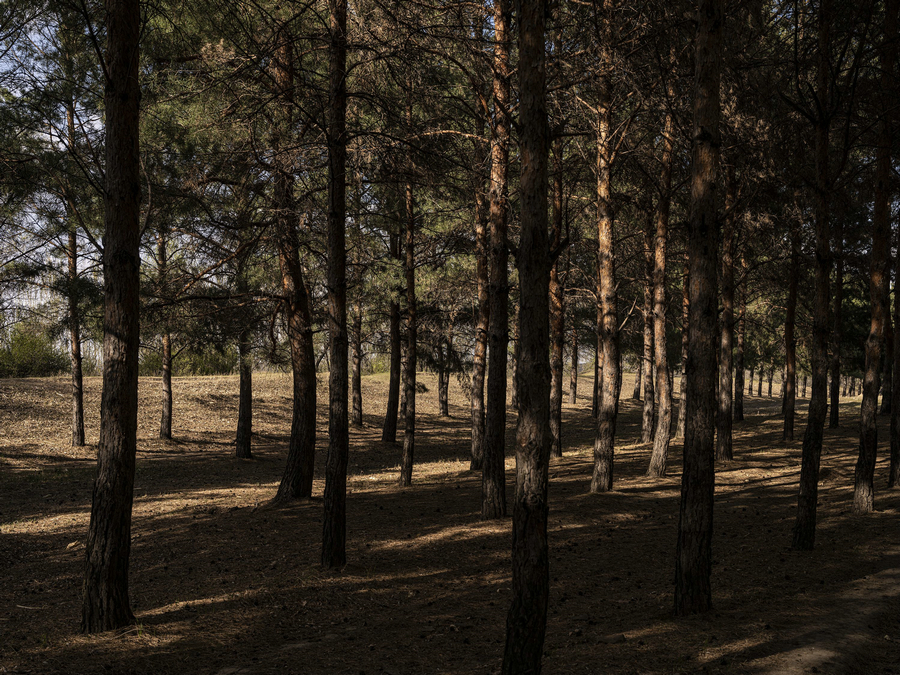The Northeast Plain stands as China's largest plain, comprised of three distinct sections: the Sanjiang Plain to the northeast, the Songnen Plain in the central region and the Liaohe Plain to the south. While the Great Wall traverses all three areas, its primary concentration lies within the Liaohe Plain. The construction of the Great Wall in the Northeast region was chiefly orchestrated during the Jin (1115-1234) and Ming (1368-1644) dynasties, with the earliest construction dating back to the Warring States period (475-221 BC) by the State of Yan.
 The remnants of the Great Wall constructed by the State of Yan during the Warring States Period (475-221 BC) in Jianping county, Liaoning province. [Photo by Dong Xuming, provided to chinadaily.com.cn]
The remnants of the Great Wall constructed by the State of Yan during the Warring States Period (475-221 BC) in Jianping county, Liaoning province. [Photo by Dong Xuming, provided to chinadaily.com.cn]The Great Wall constructed by Yan State during the Warring States Period (475-221 BC): Throughout the Warring States Period, the State of Yan erected two lines of the Great Wall. The southernmost line was intended primarily for defense against the States of Qi and Zhao. The northern Yan Great Wall was built during the reign of King Zhao of Yan State, predominantly situated in the northern expanse of the Yan Mountains, aimed at warding off the Donghu nomadic tribes.
 The segment of the Great Wall constructed during the Jin Dynasty (1115-1234) at Nianzishan Mountain in Heilongjiang Province. [Photo by Dong Xuming, provided to chinadaily.com.cn]
The segment of the Great Wall constructed during the Jin Dynasty (1115-1234) at Nianzishan Mountain in Heilongjiang Province. [Photo by Dong Xuming, provided to chinadaily.com.cn]The Great Wall constructed by Tang (618-907) and Jin (1115-1234) dynasties: Remnants of the Great Wall from the Tang and Jin dynasties persist in Heilongjiang province, spanning a total length of 266.285 kilometers. The Jin Great Wall was mainly built to protect against the Mongol tribes. Located in present-day Qiqihar, one of the most well-preserved sections of the Jin Dynasty's Great Wall provides an opportunity to witness the full scope of its defensive capabilities.
 The Hushan Great Wall in Dandong, Liaoning province, which is part of the Ming Dynasty's Liaodong Town Great Wall. [Photo by Yang Dong, provided to chinadaily.com.cn]
The Hushan Great Wall in Dandong, Liaoning province, which is part of the Ming Dynasty's Liaodong Town Great Wall. [Photo by Yang Dong, provided to chinadaily.com.cn]Liaodong Town Great Wall of the Ming Dynasty (1368-1644): The Great Wall of the Ming Dynasty was structured as a defensive system initially comprising of nine key towns, commonly referred to as the Nine Frontiers, which later expanded to thirteen. Located east of the Shanhaiguan Pass, Liaodong Town marked the easternmost point of the Ming Great Wall. The Liaodong Town section of the Great Wall can be broadly divided into three primary segments: the Western Liaohe Great Wall, the Liaohe Bend Great Wall and the Eastern Liaohe Great Wall.





